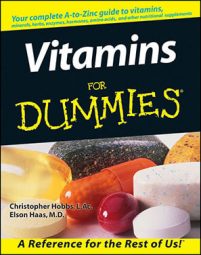Not a lot is known about these three trace minerals, but they are essential nutrients. Getting them from your diet depends on the soil in which your food is grown. Therefore, most multivitamins contain supplemental molybdenum and selenium.
What is molybdenum good for, anyway?
Molybdenum is an unusual trace mineral that has only a few specific functions that scientists have identified to date:
Helps to metabolize carbohydrates.
Produces uric acid (a breakdown product of proteins), which has some antioxidant properties.
Detoxifies sulfite, which can cause allergic reaction and other aspects of toxicity, in foods.
Occasionally prescribed for asthmatics who have difficulty in metabolizing sulfites.
The molybdenum in your food is dependent on soil levels where the food is grown and occurs in whole grains, legumes, and vegetables.
Experts do not know a lot about molybdenum toxicity or deficiency, but health problems show up with both of these in some animal studies. Toxicity may affect growth and weight; deficiency may limit the functions of this mineral.
How does selenium figure in to my health?
Selenium is an important antioxidant and cancer-prevention mineral. Geographic areas that have higher levels of selenium in the soil, such as the midwestern United States, appear to have lower cancer rates. Selenium
Functions as part of your detoxifying systems, especially in the enzyme glutathione peroxidase.
Works well with vitamin E to protect you from free radical damage.
Yeasts, wheat germ, rice, and other whole grains like brown rice contain selenium.
Selenium toxicity does exist and occurs more with elemental selenium and sodium selenite than with the protein-bound selenomethionine that is included in some nutritional supplements. Selenium deficiency is common, especially in the U. S. Deficiency may predispose you to cancer, cataracts, and cardiovascular disease.
What does vanadium do for my body?
Vanadium is a little known mineral that may actually be required for maintaining health, although no clear scientific proof of this exists at present. Bones and teeth may use vanadium as a building material. Vanadium also plays a role in blood sugar balance and cardiovascular function.
May help reduce the production of cholesterol.
May help your body with sugar metabolism.
Vanadium is found in grains, as well as in carrots, cabbage, mushrooms, parsley, and other vegetable foods. The mineral is sometimes recommended in some nutritional treatment programs for diabetics and those with cardiovascular disease.
No RDA for vanadium exists. The average person may consume 2–15 mg daily, and therapeutic levels are about 15–25 mg daily. Even higher amounts are sometimes used for diabetics (as much as 50–100 mg daily).
Vanadium appears to be nontoxic, and the consequences of deficiency are unknown. Excesses of vanadium have been associated with manic depression.

